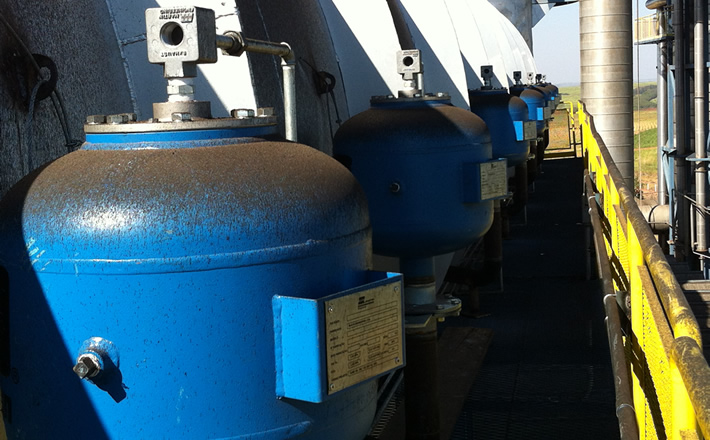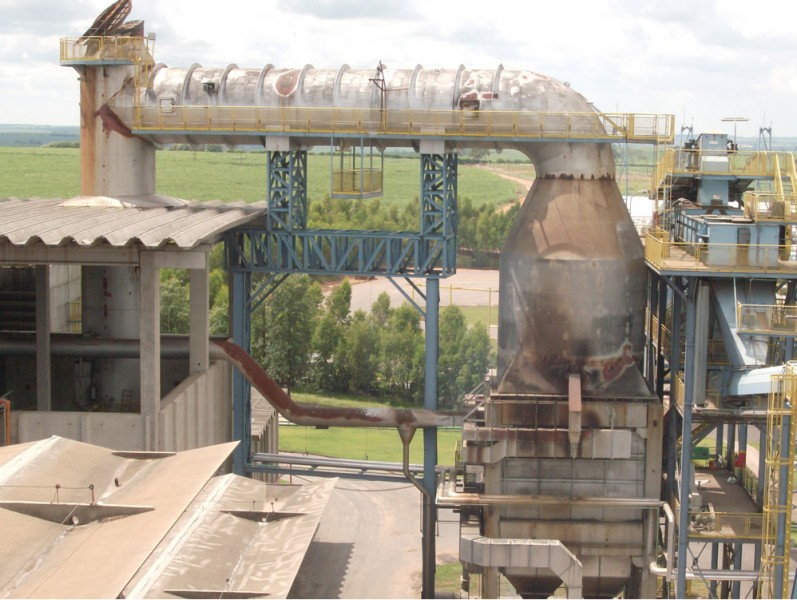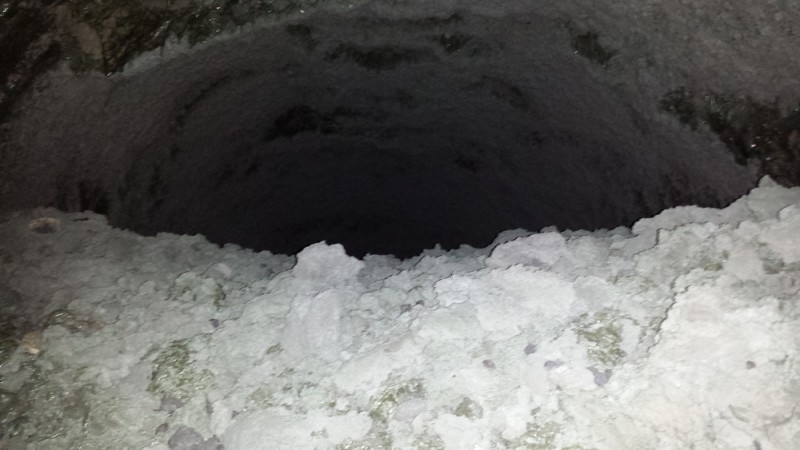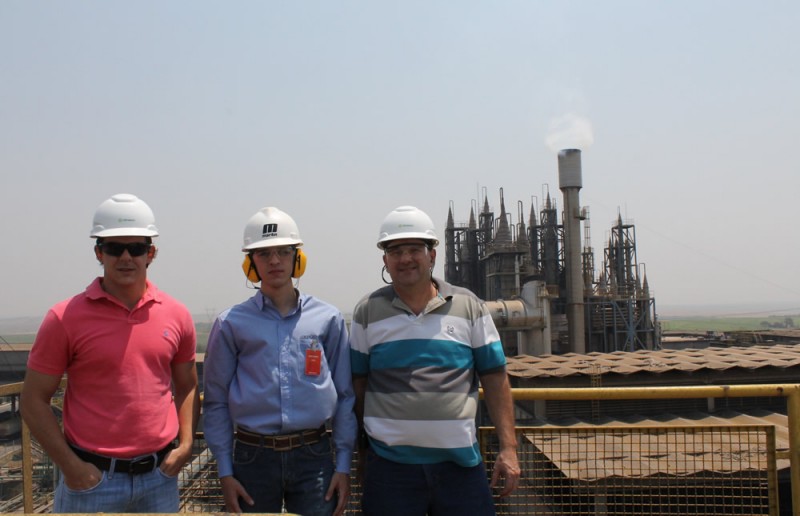Published: August 2nd 2016
Resolving Particle Buildup In a Bagasse-Fueled Gas Generator

The shift from burning fossil fuels to biomass has presented cost savings for many companies. A prime example is the change by the world’s largest orange juice producer to using a sugarcane bagasse hot gas generator or “gerador de gás quente” (GGQ) in Portuguese, for the production of citric pulp pellets, beginning in 2009. Beyond producing orange juice and oil extracts for flavoring, Citrosuco - based in Catanduva, Brazil - is also one of the largest producers of citric pellet animal feed. The substance is a cereal substitute in sheep and cow feeds, highly regarded for its caloric content and good digestibility.
The move was not without its challenges, however. The company’s switch from Brazilian petroleum fuel (BPF) oil to sugarcane bagasse was accompanied by an unpredictable repercussion that threatened to offset the financial benefit – excessive silica particle buildup in ductwork slowing production and posing a potential hazard to the area and to workers.

The problem began with the soil in which the sugar cane is grown. Bagasse is a dense pellet made from the leftover dried husk of sugar cane, which produces enough heat to be considered a viable source for energy generation. Sugar cane in Brazil is grown in soil with high silica content, and some of it mixes with the fibrous waste during harvesting, becoming part of the bagasse pellet. Once burned in a GGQ, the silica particulates are too heavy for the pressurized heat flow to carry them through the entire process, causing them to separate and accumulate in the ductwork, seriously impacting production.
“Citrosuco has a short annual harvest schedule of only 7 months, due to orange season, which requires 24-hour production to fulfill demand,” explained Rafael Torres Junqueira, Flow Aid Product Specialist for Martin Engineering Brazil. “The silica buildup issue required 10 days for cleanup, forcing them to burn expensive BPF oil during the remediation process, seriously effecting revenue.”
Build-Up to Trouble
Citrus feed pellets are derived from the leftover peel, rag (fibrous material and pulp) and seeds of the juice-making process. The mixture is pulped and pressed under high pressure to reduce the moisture, then transferred to giant rotating drums heated by the GGQ. The dried meal is compressed in an extruder to form cylindrical pellets.

“Over our production period we’ll burn about 420 tons of bagasse per day for the process,” said Leonardo César Bolato, Senior Project Engineer for Citrosuco. “The dosage of bagasse for firing is controlled according to the demand for heat by the process dryers.”
When bagasse is burned, fly ash and silica particulates travel through an inverted U-shaped duct configuration. The heat is blown into the process dryers, pulling the moisture from the citrus residue. Although the fly ash traveled properly to collection points, Citrosuco operators found that the dry silica particles collected at the roof of the first duct curve and, after being exposed to extreme temperatures for long periods, liquefied and accumulated at the base of the duct.
The liquefied silica clogged the duct 90 percent, causing intense pressure to build within the system and posing an explosion risk. This required the operation to be switched to burning BPF oil instead, the cost of which is more than 14 times that of bagasse.
To clear the obstruction, the bagasse incinerator had to lay dormant for 4 days as the molten silica cooled and hardened. Workers would then enter the duct through a trap door, wearing specialized heat reflecting suits that allowed them to chip away the hard mass with pneumatic hammers. This process took roughly 4 days because workers could only spend a limited amount of time in the duct. As they hammered closer to the core of the mass and exposed more molten silica, the heat forced crew members to rotate shifts to maintain a safe environment.
Counting the period needed to heat the system back to peak efficiency, the amount of downtime was approximately one and a half months out of the company’s 7-month window. Citrosuco executives realized that – beyond the cost – it was becoming a serious workplace safety issue. After the first season, operators and executives began searching for an answer.
Seeking New Solutions
Company representatives visited several cement production facilities with similar needs for their calcination process, which requires intense heat passed through huge rotary kilns. The team found that nearly all of the facilities they visited successfully utilized Martin® Air Cannons. Though the cannons were in place to direct the flow of fly ash, the research team speculated as to whether the concept could be adapted to Citrosuco’s GGQ silica issue, so they reached out to Martin Engineering Brazil.
“When I heard their needs, I realized that this was probably the first time that an air cannon had been used for such an application,” remarked Junqueira. “I contacted our flow aid products expert, Brad Pronschinske, because we had never exposed our equipment to this type of application before. We were very excited to be able to tackle this unique problem.”
The Martin Engineering team examined the operation of the GGQ and realized that the silica particulates, though heavier, only became liquid after they had settled. They theorized that if the particles could be kept flowing through the system with the fly ash, the silica would naturally come to rest in designated collection areas.
A plan was formulated that included a combination of twelve 70 liter and 150 liter Martin® Typhoon Air Cannons. “We positioned them in a staggered pattern along the horizontal duct,” explained Brad Pronschinske, Global Product Manager of Flow Aid Products for Martin Engineering. “The cannons were set to fire one after another in quick succession, starting at the elbow, to promote the constant and consistent flow of particles and gas through the system.”
The hybrid design of the Martin® Typhoon Air Cannon offers an improvement on negative pressure firing systems by combining the simple one-line plumbing of traditional valve design with the power, efficiency and easy maintenance of an advanced internal valve. Supplying more force output with less air consumption than traditional air cannons, the complete valve assembly can be removed in one easy step and replaced within minutes, working from one side of the tank, eliminating the need to ever remove the tank from the vessel for service.
“The entire process, from initial design and finalization of drawings for subsequent approval, lasted about three months,” Bolato continued. “The installation of air cannons and all necessary infrastructure required 2 months during the off season, with a staff of 25 contractors and 6 Citrosuco workers.”
Results

“Since it was a pioneering application, we had an apprenticeship with the air cannons at the beginning,” Bolato recalled. “We had no frame of reference for the optimum sequence, so we gradually adjusted the timing, firing the cannons in progressively more intense operating conditions. Today, the air cannons operate with the maximum number of shots allowed,” he said. “After the last cannon fires, there is only 1 minute of lag time until all reservoir vessels reach the 7.0 BAR (101 PSI) of pressure needed to discharge again.”
The schedule is maintained 24 hours per day throughout Citrosuco’s entire production window. Halfway through their third season of use, operators have reported no unscheduled downtime, no need to use fuel oil and only minimal post-season silica buildup since the conclusion of the project. “It took a lot of courage on the part of Citrosuco’s senior management to trust that we would come up with a solution that, to my understanding, had never been done before,” said Junqueira.
According to Bolato, “The main benefit of this project – in addition to ensuring more stable production and safer conditions in which to operate and maintain equipment – was ratifying a spirit of trust. We worked as a team with the experience and contribution of all stakeholders in their respective specialties. By doing so, we got the results we expected from the project's inception.”